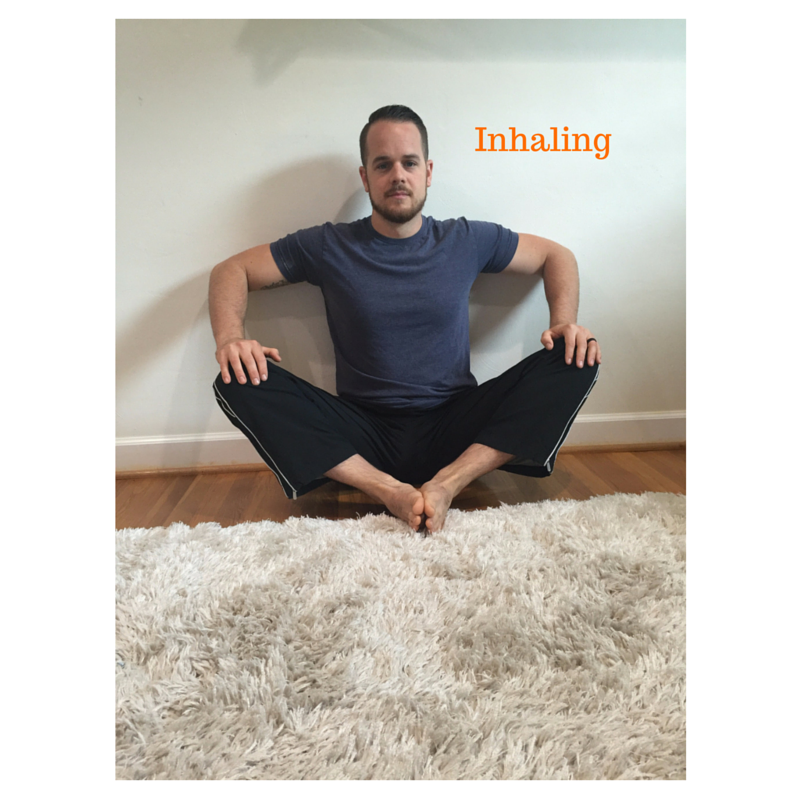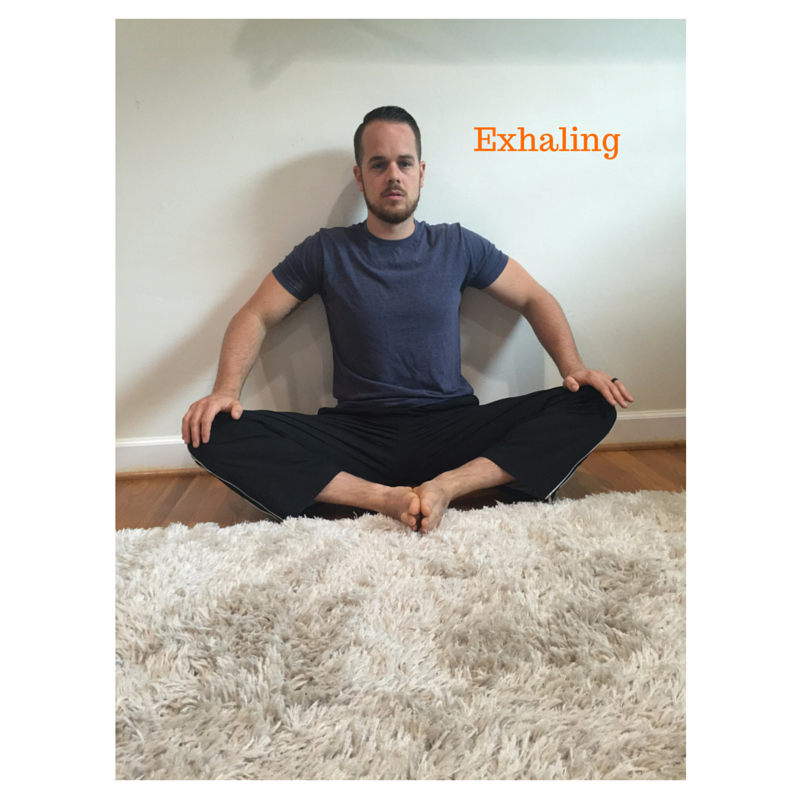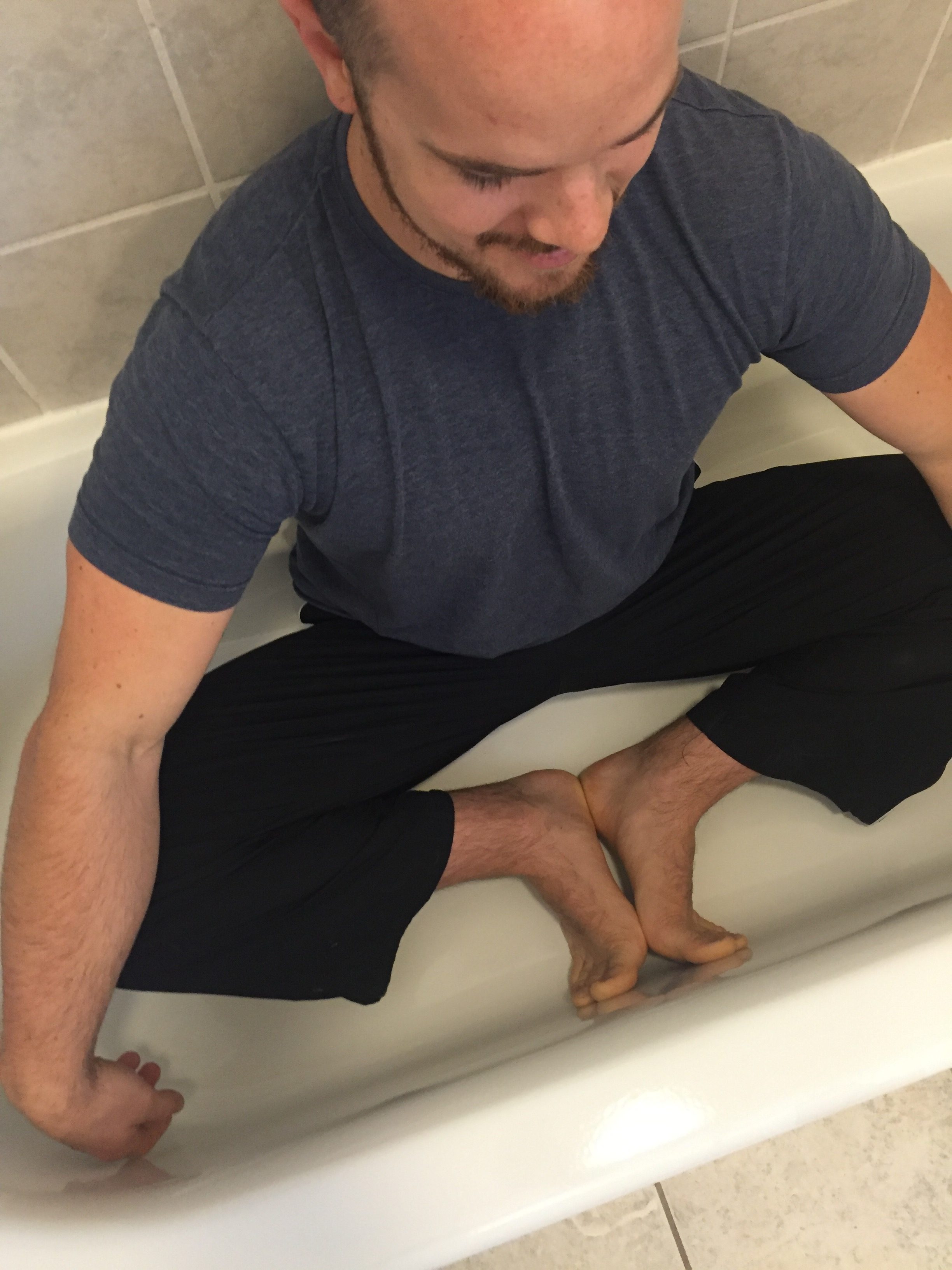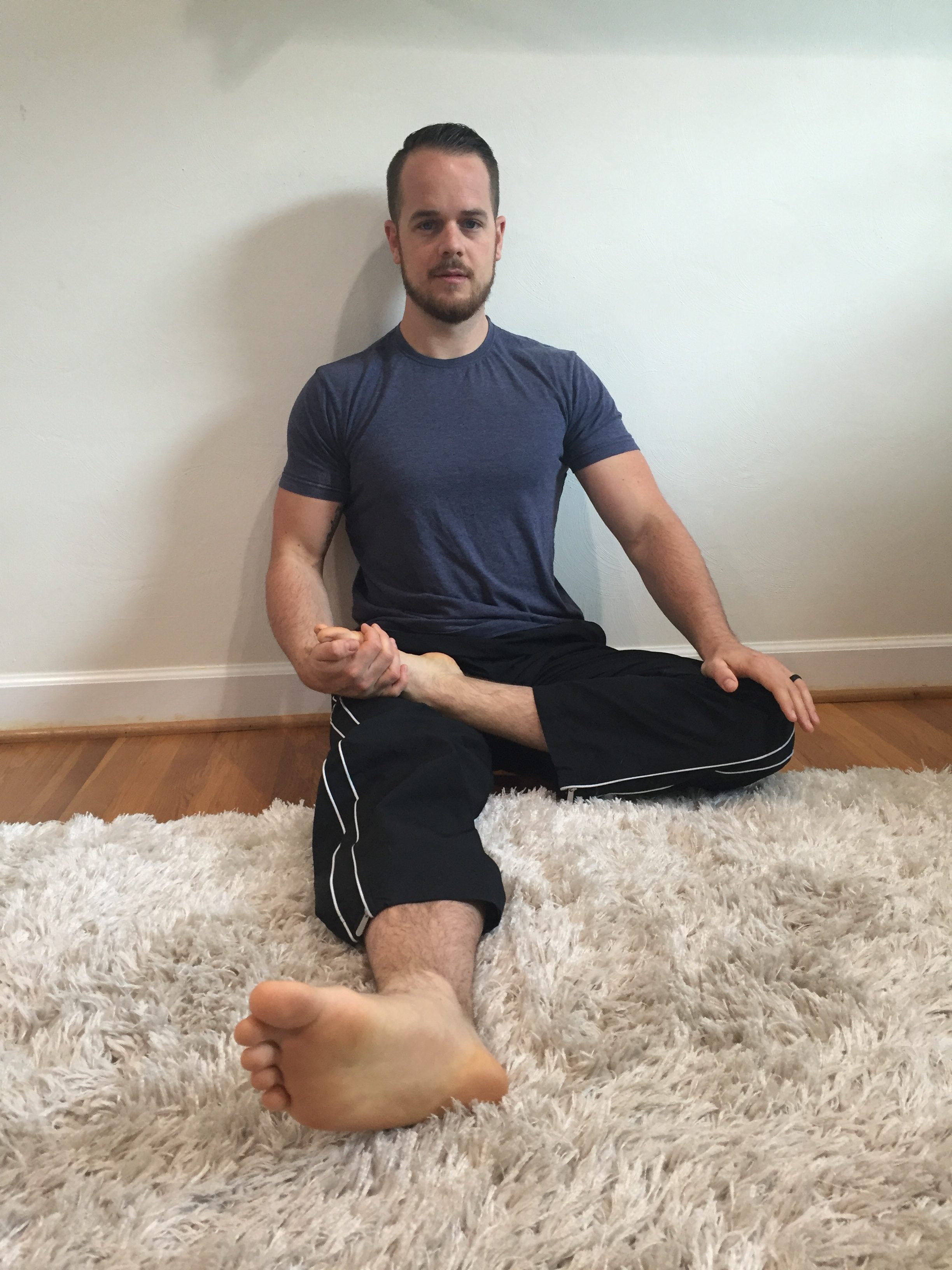We all know sitting is trashing our backs. What if there was a way to change the way you sit that would not only bring instant relief but allow you to sit for hours on end without your legs going numb or your back locking up? Well it’s possible. I was recently turned on to this ancient posture and have been incorporating it as much as I can and have been really pleased with its results. I want to show you exactly what it is, how to do it and why it works so well! Check it out!
Have you ever heard the old saying; “Chew up the meat and spit out the bones”? It’s a way of saying, take from something what resignattes with your current situation and throw out the rest. Whether the “rest” just doesn’t apply to you or it’s not needed. The idea is to just focus on what works best for you. I use this a lot when it comes to treating my back pain without doctors or the influence of much medical advice. Lately, I’ve been studying up on Yoga and the many positions and postures it promotes. When it comes to treating back pain, to say that yoga does an amazing job is kind of a blanket statement because I know for a fact there are a lot of positions that are terrible for people with back pain. So I always dive in and search around for what works and what doesn’t and I always suggest you do the same.
I am currently working through a new book called Deskbound by Dr. Kelly Starrett (That is NOT an affiliate link. I get paid nothing to mention his book) and he pointed out something that has made a BIG difference in changing my daily habits to support a healthy spine especially when it comes to sitting. Kelly is really good at pulling out one aspect of a big idea, that can change your life when it comes to common problems us humans have with our movement. I want to tell you about one thing in particular today.

Let me set the stage.
Sitting is literally changing the mechanics of the way we sit stand and move…for the bad. BUT, If we are honest with ourselves, there is no way we can stand 100% of the time. Some things are just done sitting. On top of that what if your standing form is garbage!? . It wont matter whether your standing or sitting your back will always be irritated. So what do you do? We talk about the importance of looking at ALL facets of your life to diagnose and treat your current back pain but what do you do when you have to do the things that could be causing you the pain, such as sitting?
In comes the Lotus.
Like I said, we can’t throw out sitting all together but we can adjust the way we sit to support the best position for our hip and spine. One of the things that Kelly talks about in his book is how his family watches TV sitting on the ground. During this time they not only watch tv but also work on a few mobility drills to make use of the time. One of the positions he talks about is what is known in the Yoga world as the Lotus. It’s an ancient Indian posture that allowed them to meditate sitting for hours on end. If you think about it, it makes total sense. The key to sitting is finding ways to use the muscles and supporting structures in the body to stabilize and support the spine. When you’re standing, it’s easy to fire the glutes, contract the trunk and drawl back the shoulders but when sitting, you cut out some of these key structural musts. BUT and that’s a big but. If you can find a way to get the same stability you have while standing, than you can make sitting more enjoyable and less detrimental on your spine and lower back.
What I want to try and do today is give you a step by step process of working up to the Lotus and what you can do in the mean time if your unable to get into the position.
The Lotus
So the lotus is pretty intense. As I write this, I personally am still working on mastering this position but attempting it has proven to me that I have lost a lot of range of motion in my hips. In my attempt to learn to stabilize my spine better to reduce poor positioning and inflammation, this is something I am doing daily!
How does it work?
The “science” behind this posture is that the passive, external rotation of the hips provide stability to the pelvis without any real active contraction on your end (hence the word passive). This is huge when it comes to locking the hip in a healthy position. Because of this “screwing” effect that’s going on in the hips, you really don’t need to actively contract your trunk to keep a neutral spine position. An example of this would be trying to sit with a flat back with your legs straight out in front of you. After about 2 minutes being in this position your back will begin to cramp and lose position. This is because of how much effort is needed to keep the spine neutral. With the lotus, the hips are locked in which takes the pressure off of you and makes sitting sustainable for longer periods of time.
How do you do the Lotus?
It’s not really about technique when it comes to doing the lotus. You either can do it or you can’t and the limiting factor will be your hips range of motion. To get into the Lotus take your left foot and place it over top of your right thigh. If you have the hip ROM then you should be able to have the bottom of your foot facing up with the sole of your foot against your abdomen. Take the opposite foot and do the same thing over the right thigh. If your in position, create a small bit of tension in your trunk to maintain a neutral spine.
Key side notes: It doesn’t matter which leg is on top and bottom. I would suggest getting comfortable with both. When you’re doing the Lotus be sure your not over extending or hunching forward and that you are centered over your crossed legs. This only works if your posture is perfect.
So odds are you failed miserably at getting into the Lotus. Thats okay! What I want to do now is give you a few techniques to stretching your way into being able to do the lotus and some other options that you can do while you practice.
What to do if you can’t do the Lotus.
Sit with your legs crossed. Like the way you did when you spent hours on end playing video games as a kid. The majority of you can probably do this but if not, it’s a pretty simple position to work your way into compared to the full blown Lotus. If you can’t get into this position than congratulations, your body has refigured it’s mechanics to fit your lifestyle which I would have to assume has a common sitting theme (it’s ok, we can fix this too! It’s all about knowing your issue and its cause!).
So, if you have attempted both the Lotus and simply sitting with your legs crossed and failed, you can probably guess you need some work. Now what I want to do is give you a step by step stretching protocol to first make sitting cross-legged better but ultimately working towards getting you into the Lotus.
2 simple stretches to open the hips for the Lotus
Before you start stretching, always do a quick warm up. This can be a 10 minute walk, 5 minutes of jump rope, short jog or after a hot bath or shower. Either way get the muscles warm.
-
The Butterfly Stretch
The butterfly stretch is a beast when it comes to opening up the inner thighs, groin and hips. Easily one of the most underused stretches on the planet. When doing the butterfly stretch the key to getting a good stretch is the rhythm you make between you’re breathing and the tension you create with your hands. What I suggest you do is sit with your back flat against a wall and bring the bottoms of your feet together in front of you (if you can’t do this don’t worry i’ll have something for you to do later). Once your feet are together with your toes facing out, place your right hand on your right knee and your left hand on your left knee. With every exhale of your breath, apply pressure down into the ground using your hands. With every inhale take off the pressure and allow your knees to lift. Repeat this cycle for 2 minutes.
Inhaling: Removing pressure off the knees and allowing the muscles to relax and soften.

Exhaling: Applying pressure down on the knees while trying to open the hips.

Tub Stretch Bonus: One of the BEST places to do this stretch is in a tub full of hot water and a few cups of Epsom salt. I know this stretch looks impossible for some and kinda weird but if your the right size it can be done. I am 190, 5’11. I was super cramped but was able to get into position sitting facing the long side of my tub. I had been soaking my legs for about 30 minutes when I figured out I could do this. I simply turned and faced the long side of my tub and weezled my way into position. Once I was in position, I did the inhale, exhale technique and it worked great. The added bonus was that I was able to use the back wall of the tub to help keep my back neutral while I braced my trunk. If you can’t do it in the tub don’t sweat it, do it as soon as you get out and use a wall to support your back.


2. The Half Lotus Stretch
This one looks like you’re working on your hammies and Piriformis but it’s actually a great way to mimic the cross-legged position or the Lotus without actually getting into full position

With your left or right leg out straight, take the opposite foot and place it across your thigh. You will probably notice your knee hike up once you place the foot on the thigh, thats ok. Take which ever hand is on the same side as the leg that is crossed over and place it on top of the knee. Similar to the tub or butterfly stretch work on the inhale, exhale technique while pressing down. Be smart, your not trying to break records here. You want to progress slowly without causing pain. With this stretch you’re only working on one leg at a time. Hit both sides for 2 minutes each.
So that’s basically all you need to know to start working on improving your sitting posture with the Lotus. In conclusion the main points I want you to remember is add this stretch or posture (once you get it) as much as you can when your sitting. You can do it at home, at the dinner table, watching tv or at the office. The less stress and strain you place on your lower back the more you can open the area up and allow it to heal. I talk a lot about my personal issue dealing with inflammation due to years and years of neglect and poor mechanics. This is teaching me to re-stabilize my pelvis and maintain an upright neutral position for longer. With every stretch you see above hold the position for 2 minutes. Repeat the stretches 2+ times a day or until your able to maintain the position correctly.
Enjoy!
William
P.S How did you do? If you attempted it let me know how it worked for you below! I’ll see you in the comments!



I am suffering from back pain for about three years. and now also I do not sit in chairs in my office and do office tasks standing on Podium side..Shall try the solutions prescribed by you..
Hey Sheo, Key is to keep moving. Don’t beat yourself up if you can’t sit at a desk for 4 hours straight without moving. Our bodies want to move. Give your body more variety through out the day.
I have been suffering from back pain for so long. I will surely give this a try. Thanks for sharing.
Hey Kate,
Thanks for checking it out. There are a lot of different aspects to look at with back pain. This could just be one portion of a bigger picture so if it does not bring the relief you were hoping don’t get discouraged. Poke around and ask questions and I can help get you on the right track.
Is the Lotus ok for people with spine curvature/sacroiliac issues?
What do you mean by spine curvature? Like scoliosis?
With anything that comes to back pain and trying to find relief, it’s a progressive thing. If your SI issues is severe, then doing the Lotus just to do it wouldn’t make sense. The Lotus isn’t used to fix SI joint issues rather than bring stability to the hips and low back while you sit.